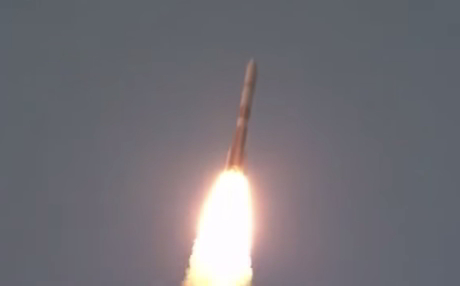WGS-7 satellite to provide more military bandwidth
Monday, 27 July, 2015

Boeing’s seventh Wideband Global SATCOM (WGS) satellite is now in orbit and will soon provide the US and allied militaries with 17% more secure communications bandwidth than its predecessors, thanks to a payload upgrade.
WGS-7 sent its first successful signals soon after being launched last Wednesday on a United Launch Alliance Delta IV rocket.
The next three WGS satellites will incorporate Boeing’s advanced digital payload design, which doubles payload bandwidth and further improves connectivity.
Starting with WGS-8, each wideband satellite will include a Next Generation Wideband Digital Channelizer, which will provide a more than 90% improvement in available satellite bandwidth.
WGS-8 is scheduled for launch in late 2016. Boeing will deliver a total of 10 WGS satellites to the US Air Force.
“Every WGS that we deliver increases the ability of US and allied forces to reliably transmit vital information,” said Dan Hart, Boeing vice president, Government Satellite Systems. “By utilising commercial processes, we are able to offer greater capacity at a lower spacecraft cost, resulting in more than US$150 million in savings for WGS-7 through WGS-10.”
The global program has allowed member nations to invest proportional to their specific level of MILSATCOM needs. This arrangement provides the benefits of immediate access through an existing worldwide infrastructure, and the ability to leverage existing terminals and telecom equipment.
Australia became the first international participant in the WGS system under a cooperative agreement with the US Air Force in 2007.
Since then, five additional partner nations — Canada, Netherlands, Luxembourg, Denmark and New Zealand — have executed a similar agreement to gain global access to the system.
Seeing the benefits of the system, other nations have expressed interest in the program.
Perth's new rail network control centre ready for operations
The new control centre, which covers roughly 1000 m2, will be responsible for...
5G mmWave extended to 14 km in nbn field trials
Live field trials of 5G mmWave technology in parts of the nbn Fixed Wireless network achieved...
Mavenir and Terrestar achieve NTN Voice over NB-IoT call
The achievement was conducted over a 3GPP-standardised NTN S-band spectrum, avoiding interference...





